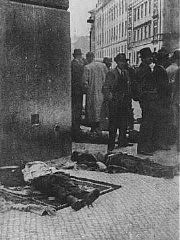You searched for: 东欧谷歌霸屏【TG飞机:@bapingseo】领英推广【TG电报:@bapingseo】印尼youtube开户【Telegram:@bapingseo】app注册送18元彩金无需申请澳门mg游戏下载?20220707U5bkma.html
<< Previous | Displaying results 131-140 of 270 for "东欧谷歌霸屏【TG飞机:@bapingseo】领英推广【TG电报:@bapingseo】印尼youtube开户【Telegram:@bapingseo】app注册送18元彩金无需申请澳门mg游戏下载?20220707U5bkma.html" | Next >>
-
Bela Blau
ID CardBela's city of Bratislava, located on the banks of the Danube river, had an old and important Jewish community. Bela was the eighth child in his large Jewish family. His father was a furrier. At age 16 Bela began working as a salesman for a textile business. In 1930 he was called up for 18 months of army service. 1933-39: Bela and his wife moved to the Slovakian city of Zilina. Their son was born in November 1937. Bela worked for a German photographic company until 1938, when he lost his job because he…
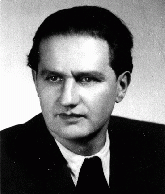
-
Madeline Deutsch describes her postwar experiences
Oral HistoryMadeline was born into a middle class family in an area of Czechoslovakia that was annexed by Hungary in 1938-1939. Her father worked out of their home and her mother was a homemaker. Madeline attended high school. In April 1944 her family was forced into a Hungarian ghetto. The family lived in the ghetto for two weeks before being transported to Auschwitz. Madeline and her mother were separated from her father and older brother. Neither her father nor brother survived the war. A week after arriving in…
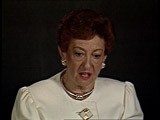
-
Fürstengrube
ArticleLearn about Fürstengrube subcamp of Auschwitz, including its establishment, administration, prisoner population, and forced labor and conditions in the camp.
-
Tehran Children
ArticleLearn about the “Tehran Children,” a group of Polish-Jewish refugees. In 1942, they were resettled from the Soviet Union to Palestine via Iran.

-
Ravensbrück
ArticleLearn about conditions and the treatment of prisoners in Ravensbrück, the largest concentration camp for women in the German Reich.

-
1944: Key Dates
ArticleExplore a timeline of key events during 1944 in the history of Nazi Germany, World War II, and the Holocaust.
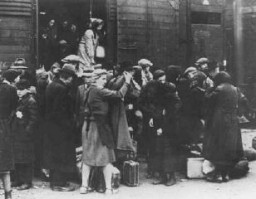
-
The Oneg Shabbat Archive
ArticleBegun as an individual chronicle by Emanuel Ringelblum in October 1939, the Oneg Shabbat underground archive became the secret archive of the Warsaw ghetto.

-
100-meter race at the Olympic Games in Berlin, 1936
Film[This video is silent] Olympic athlete Jesse Owens won four medals at the 1936 Olympic Games in Berlin, Germany: 100-meter dash, gold200-meter dash, goldBroad (long) jump, gold4x100-meter relay, gold This footage shows Owens winning the 100-meter dash in a time of 10.3 seconds. Owens was one of the 18 African Americans (16 men and 2 women) who competed in the 1936 Olympic Games in Berlin. These athletes brought home 14 medals: 8 gold; 4 silver; and 2 bronze.

-
Wedding in Munkács
FilmHuge crowds of well wishers gather in the streets on the occasion of the wedding of the Munkács rabbi's 18-year-old daughter, Frime Chaye Rivke. The Grand Rabbi of Munkács (Mukacevo), Chaim Elazar Shapiro, father of the bride, makes a speech in Yiddish exhorting Jews in America to continue to keep Shabbes (to observe the sabbath day). The wedding party then enters the synagogue grounds, and the cantor sings blessings beneath the wedding canopy. The wedding concludes with festive klezmer…
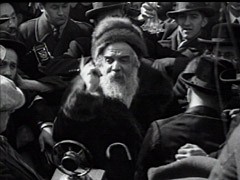
-
Bodies of Czech resistance fighters in front of the Carlo Boromeo Church
PhotoThe bodies of SS General Reinhard Heydrich's assassins and five other operatives were displayed in front of the Carlo Boromeo Church (now the St. Cyril and Methodius Church). On May 27, 1942, two Czech parachute agents (Jan Kubis and Josef Gabcik) succeeded in rolling a hand grenade under Heydrich's vehicle. Heydrich later died from his wounds. Kubis and Gabcik went into hiding, joining with five other operatives in the Carlo Boromeo Church in Prague. On June 18, however, Nazi authorities became aware of…
